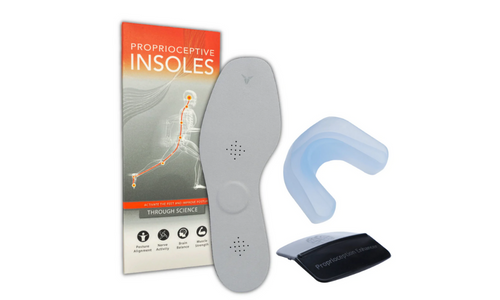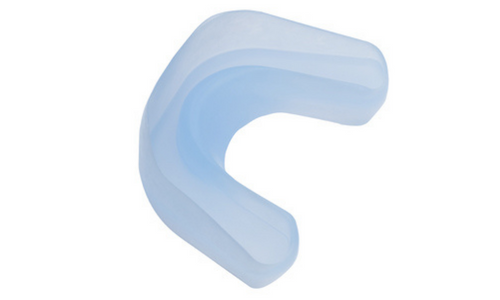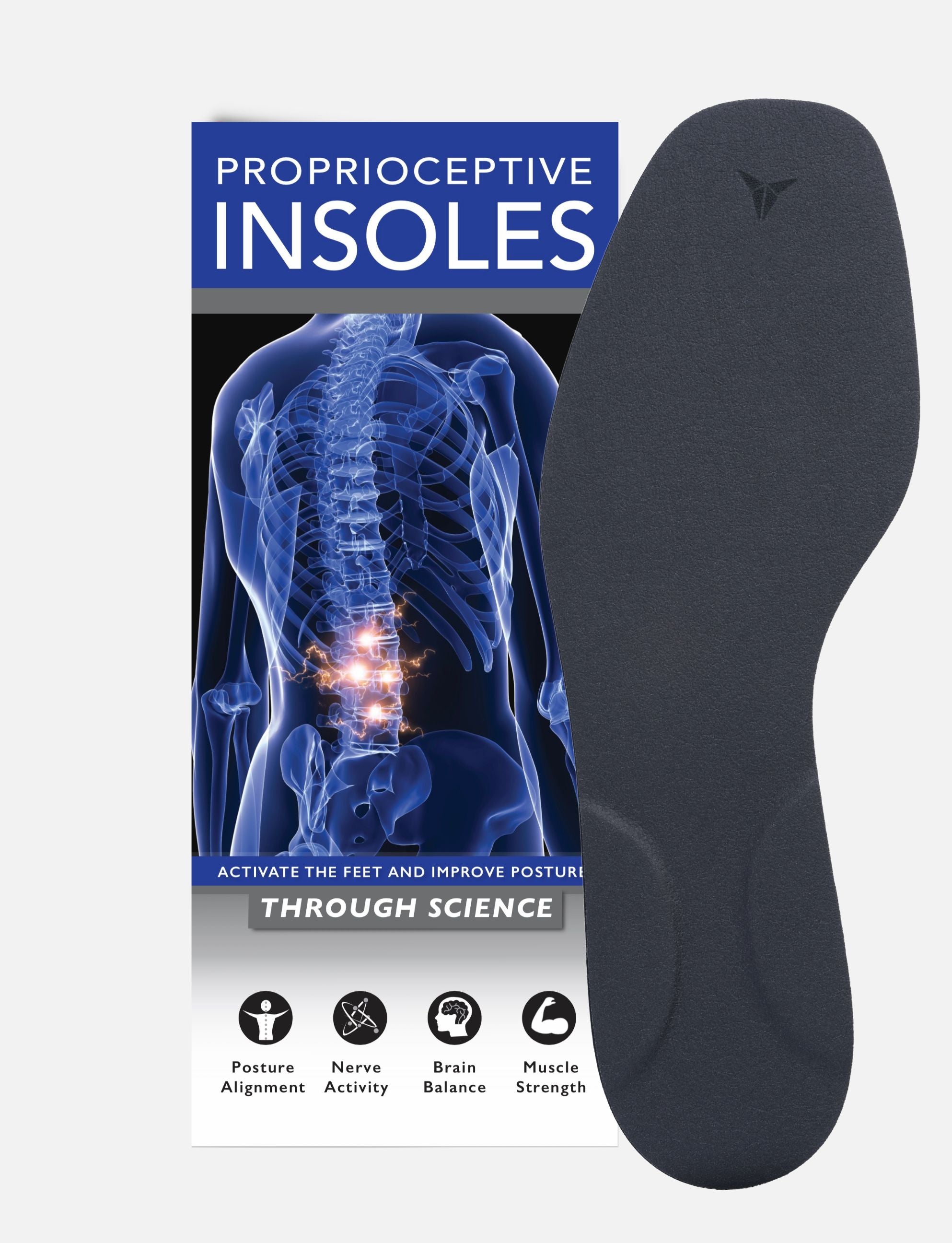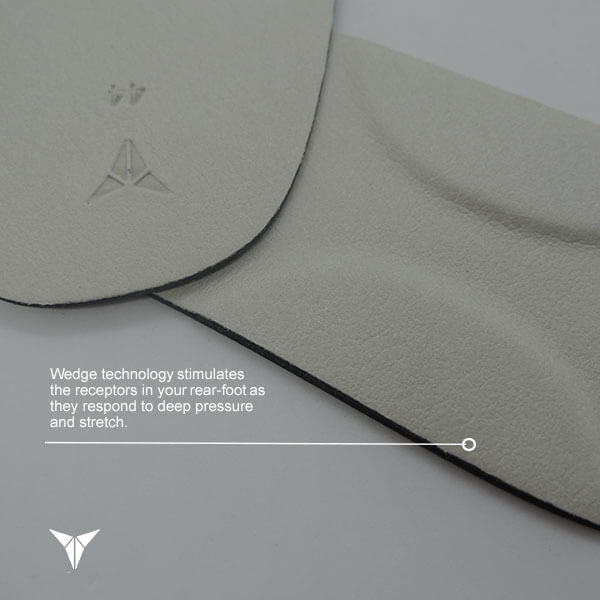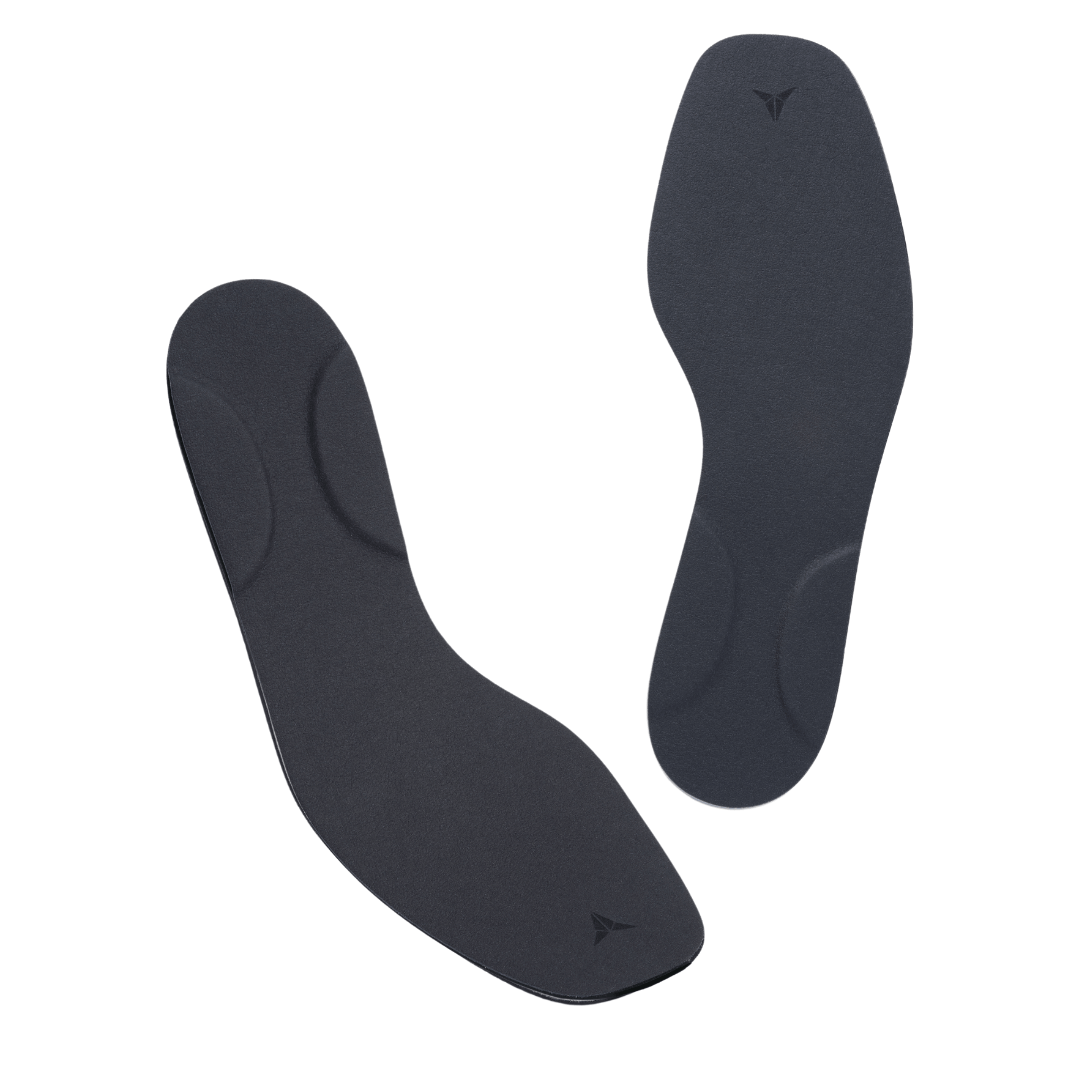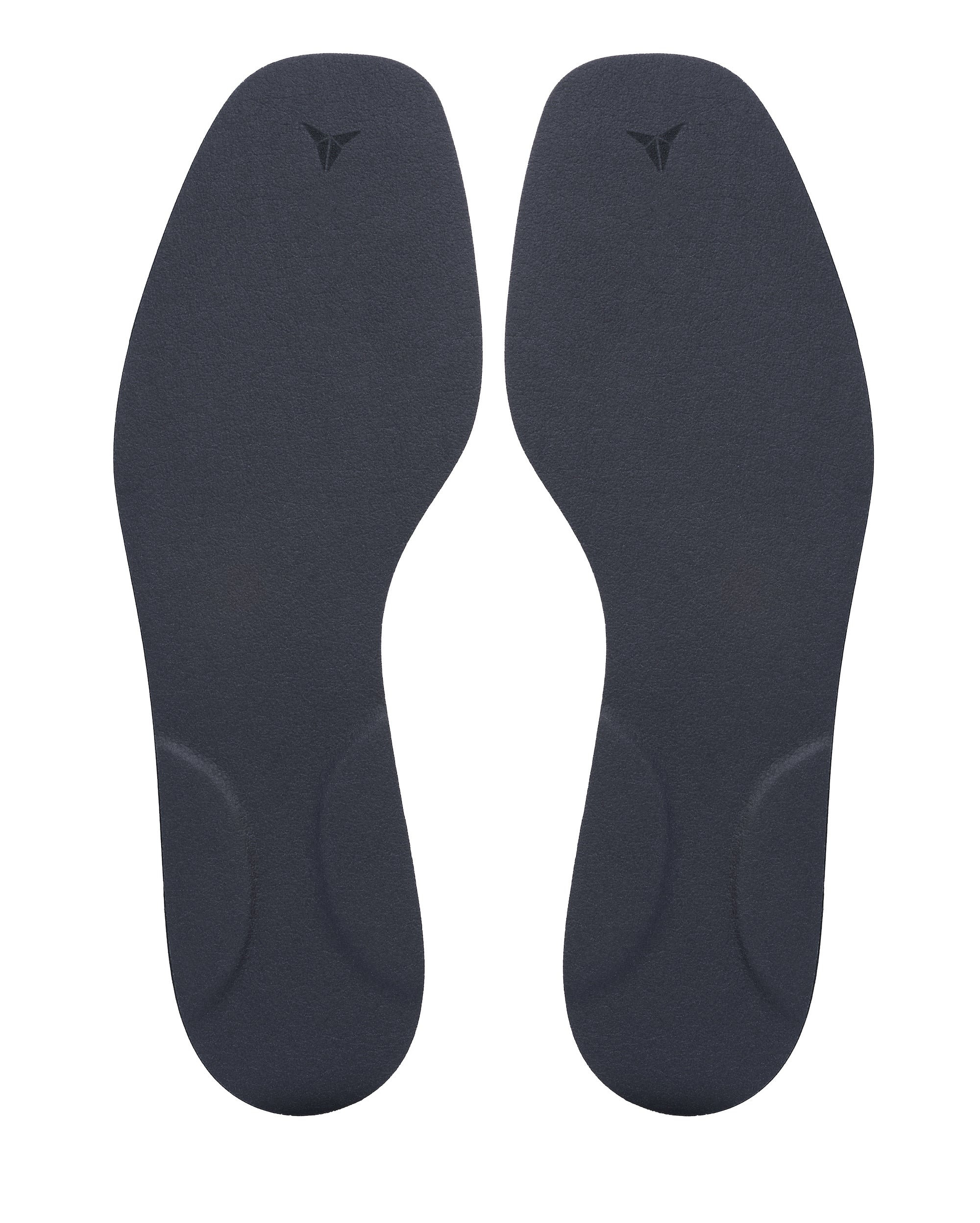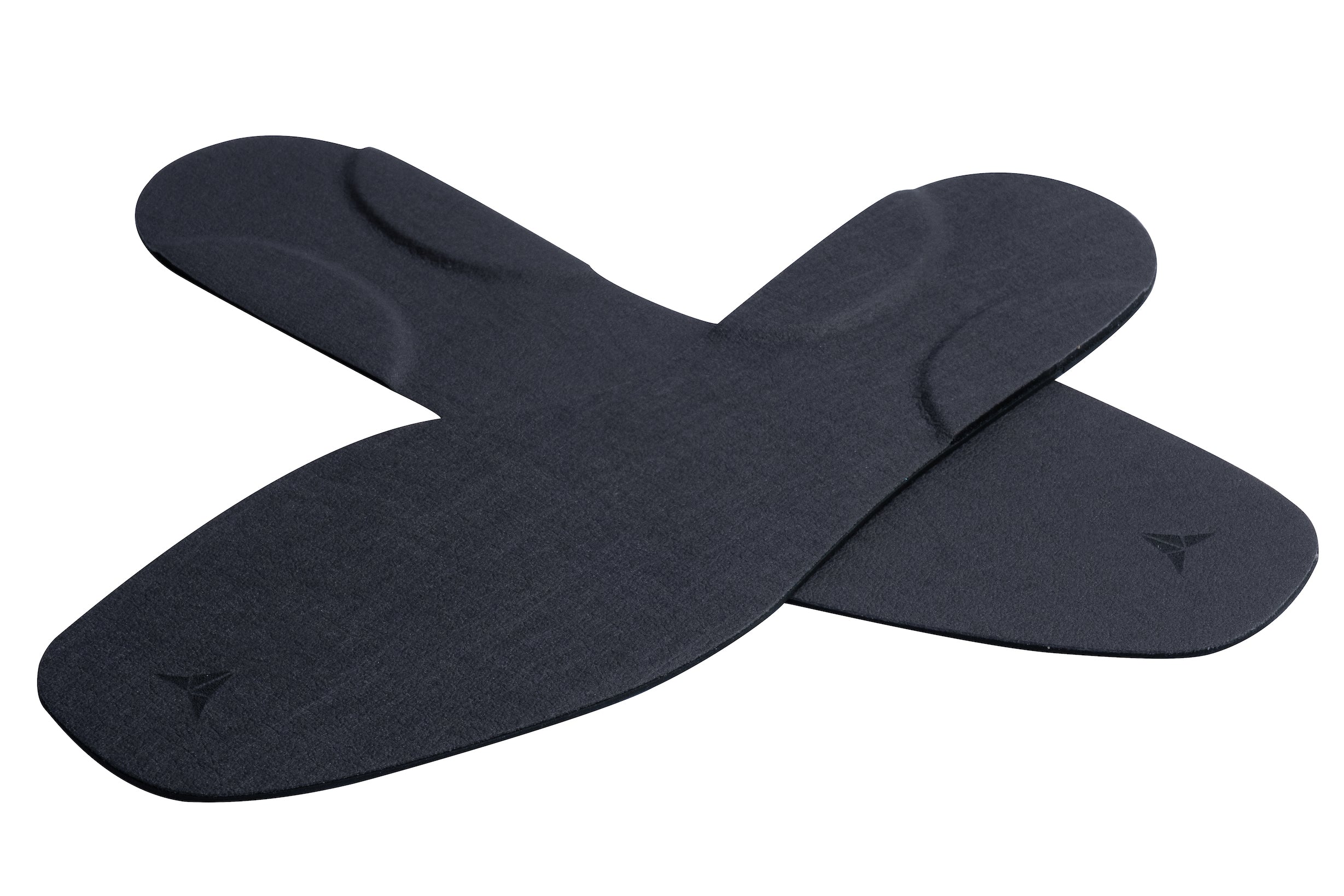HOW TO MEASURE?
- To measure your feet, stand on a level floor with the back of your heels against a straight edge or wall.
- Take the measurement (in centimeters CM) from the wall to the end of the longest toe (see image below). This is your foot length measurement.
- Selecting a shoe size: If your foot measurement is halfway between sizes, select the larger size.

HOW TO SELECT THE RIGHT WIDTH?
The wide-width insoles are designed for those who use wide-width shoes ( e.g., Vivobarefoot or Xero Shoes).
If you use regular shoes, we recommend the standard width.

ACTIVATE YOUR POSTERIOR CHAIN
The muscles in our back help us stand upright. They’re also involved in complex movements. If you have poor posture, your body has to work hard to maintain an upright position. This is both physically and cognitively draining and can lead to pain and injury. To improve stability, you need to address the posterior chain.
HOW YOUR REARFOOT AFFECTS STABILITY
If the rearfoot is poorly stimulated, then your receptors are missing vital information. This means your brain cannot orchestrate activation of the posterior chain. When the rear foot is the source of the problem, we often see a forward center of mass. This leads to an array of compensations and excess energy expenditure in order to stay upright against gravity.
HOW DO THEY WORK?
The wedge technology stimulates the receptors in your rearfoot as they respond to deep pressure and stretch.
- The signal from the skin of your feet travels to your brain through channels known as the ascending sensory pathways.
- This signal arrives in your sensory cortex, located in your parietal lobe.
- It is then transmitted to the motor cortex located in the frontal lobe. This is where your brain plans the execution of movement.
- The improved signal allows your brain to command the proper tonicity of your back chain. This encourages a neutral center of mass and optimal joint mechanics.
